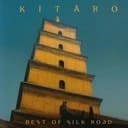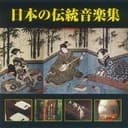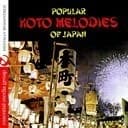Historical Origins and Cultural Significance in Japanese Music
The hirajoshi scale represents one of the fundamental tuning systems in traditional Japanese music, with roots extending back to the Edo period (1603-1868). This pentatonic scale emerged from the sophisticated modal system used by court musicians and Buddhist monks, particularly in gagaku (court music) and shakuhachi zen meditation practices. The name "hirajoshi" translates roughly to "flat tuning" or "level/flat foundation," reflecting its stable, grounded character compared to other Japanese scales. Traditional instruments like the 13-string koto, shakuhachi bamboo flute, and shamisen three-string lute frequently employ hirajoshi tuning for both classical repertoire and folk music. The scale's interval pattern (2-1-4-1-4 semitones) creates harmonic relationships that differ fundamentally from Western C Major or C Natural Minor, producing the distinctive "Japanese sound" recognized worldwide. Modern preservation efforts by organizations like the Tokyo University of the Arts ensure hirajoshi remains central to Japanese musical identity while contemporary artists incorporate it into anime soundtracks, video game music, and fusion genres.
Distinctive Musical Character and Emotional Expression
C Hirajoshi delivers a contemplative, introspective sound characterized by its minor third (E♭) and flattened sixth (A♭), creating melancholic beauty without the darkness of Western minor scales. The large interval leaps—particularly the minor third between D and G—produce the "gapped" quality typical of Japanese pentatonic scales, distinguishing it from smoother Western pentatonics. This intervallic structure evokes images of zen gardens, cherry blossoms, traditional tea ceremonies, and ancient temples, making it invaluable for film composers scoring Asian settings. The absence of semitone intervals (except the E♭ to D step) prevents leading-tone tension, allowing phrases to float without Western harmonic resolution expectations. Compared to the brighter C Yo scale or the darker C Iwato scale, C Hirajoshi occupies a balanced, versatile emotional space. Musicians describe its quality as "wistful," "nostalgic," and "quietly beautiful"—perfect for meditation music, ambient compositions, and moments requiring gentle introspection. The scale's pentatonic nature (five notes per octave) makes almost any note combination sound consonant, encouraging melodic experimentation while maintaining authentic Japanese character.
Practical Applications Across Modern Musical Contexts
Contemporary composers extensively use C Hirajoshi in anime soundtracks (Studio Ghibli films frequently feature hirajoshi-based themes), video game music (particularly RPGs set in Japan-inspired worlds), and world music fusion projects. The scale appears in meditation and wellness music, where its calming pentatonic structure creates peaceful soundscapes without dissonant tension. Jazz musicians exploring modal improvisation incorporate hirajoshi for its exotic color, often contrasting it with C Blues or C Dorian sections. Film and television composers rely on C Hirajoshi to instantly establish Japanese cultural settings—a few notes immediately transport audiences to Tokyo, Kyoto, or rural Japan. Electronic music producers use hirajoshi in lo-fi hip-hop beats, chillwave, and ambient techno, where its pentatonic simplicity provides melodic interest without harmonic complexity. The scale works effectively over sustained C minor or C major drone tones, and guitarists appreciate how its five-note structure creates accessible, memorable riffs that sound authentically Japanese without requiring advanced technical knowledge of traditional performance practices.
Comparison to Related Japanese and Western Pentatonic Scales
Understanding C Hirajoshi's relationship to other Japanese scales clarifies its unique position in Asian music theory. The C In scale (C-D♭-F-G-A♭) shares the contemplative quality but uses different intervals, while the C Iwato scale(C-D♭-F-G♭-B♭) creates a more dramatic, darker atmosphere. The C Kumoi scale offers yet another Japanese pentatonic alternative with its own distinctive flavor. Comparing C Hirajoshi to Western pentatonics reveals fundamental differences: while C Minor Pentatonic (C-E♭-F-G-B♭) emphasizes blues-rock vocabulary,hirajoshi's D and A♭ create entirely different melodic possibilities. The major third interval (E♭ to G) and the unusual A♭ to C leap produce the scale's signature Japanese character. Musicians familiar with C Chromatic can extract hirajoshi notes to understand its selective pitch collection. These comparisons help Western musicians internalize hirajoshi's logic while respecting its cultural origins.
Learning Strategies and Practice Techniques for Musicians
Begin learning C Hirajoshi by playing the five notes slowly (C-D-E♭-G-A♭) while listening to traditional Japanese music featuring koto or shakuhachi—this contextual listening accelerates authentic phrasing internalization. Practice ascending and descending patterns, emphasizing the large interval leaps that define the scale's character, particularly the minor third from D to G. Guitarists should explore hirajoshi in various positions on the fretboard, discovering how its pentatonic structure creates visually clear, memorable patterns. Improvise over a C minor drone or C power chord (C-G), allowing the scale's notes to float without Western harmonic progression constraints. Transcribe simple Japanese folk melodies like "Sakura Sakura" (often in hirajoshi tuning) to understand traditional melodic phrasing, ornamentation, and rhythmic approaches. Compare C Hirajoshi directly with C Minor Pentatonic to hear how substituting D and A♭ for F and B♭ transforms the scale's cultural identity. Compose short pieces using only hirajoshi notes, experimenting with sparse textures and sustained tones typical of Japanese aesthetic principles like "ma" (negative space). Study contemporary uses in anime soundtracks, video games like "Ghost of Tsushima," and world music fusion to understand how hirajoshi adapts to modern production contexts while maintaining authentic character.





